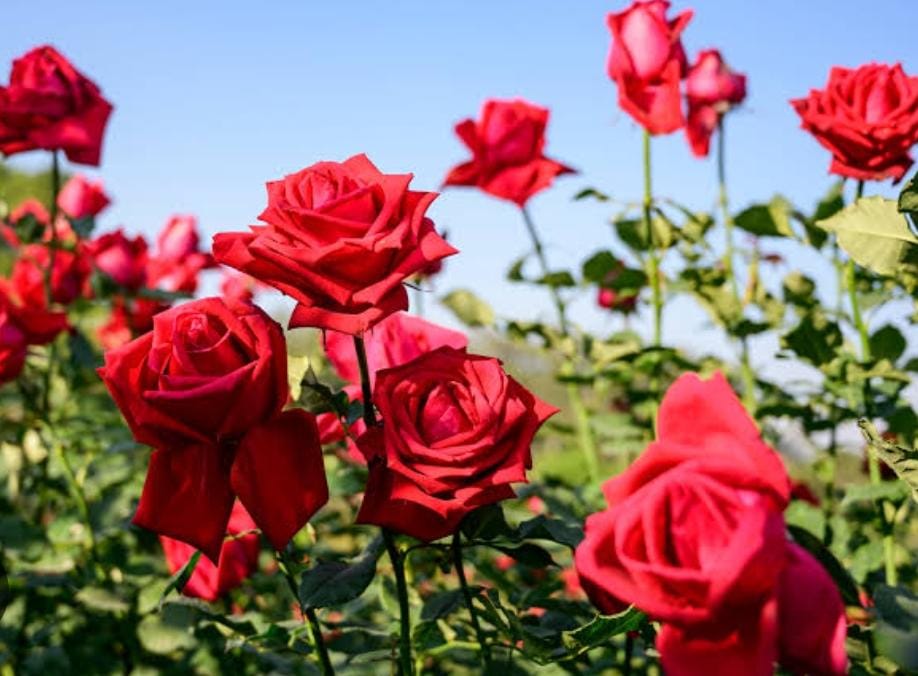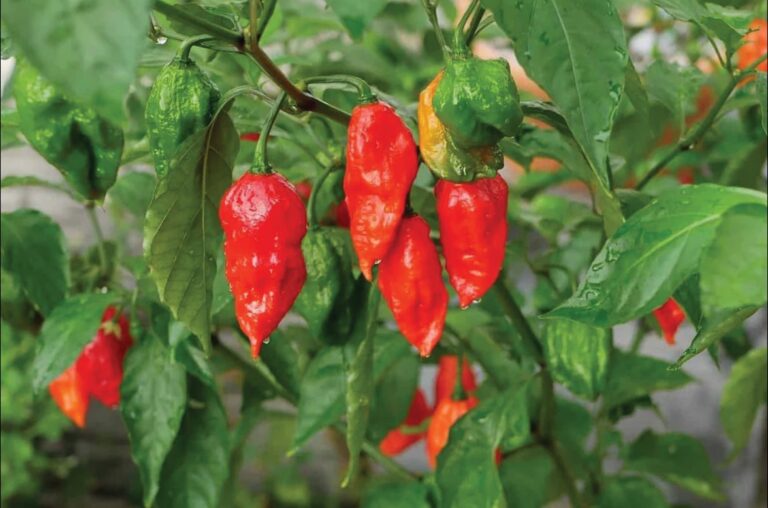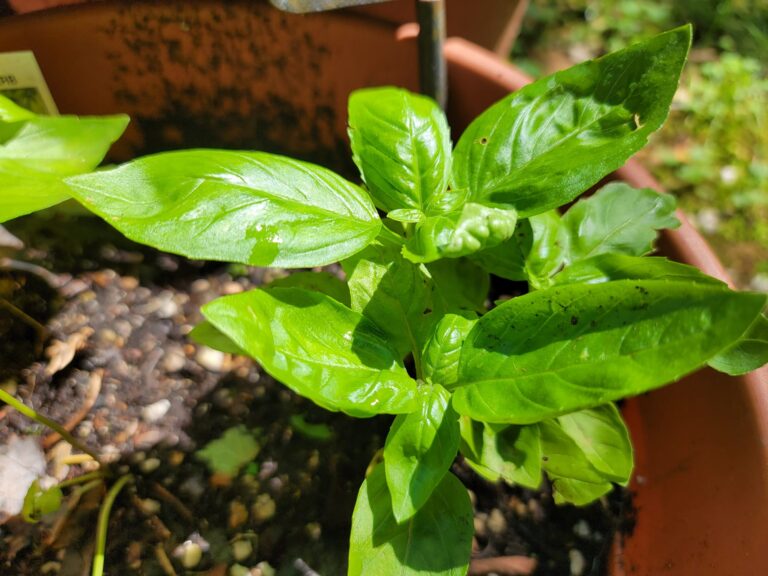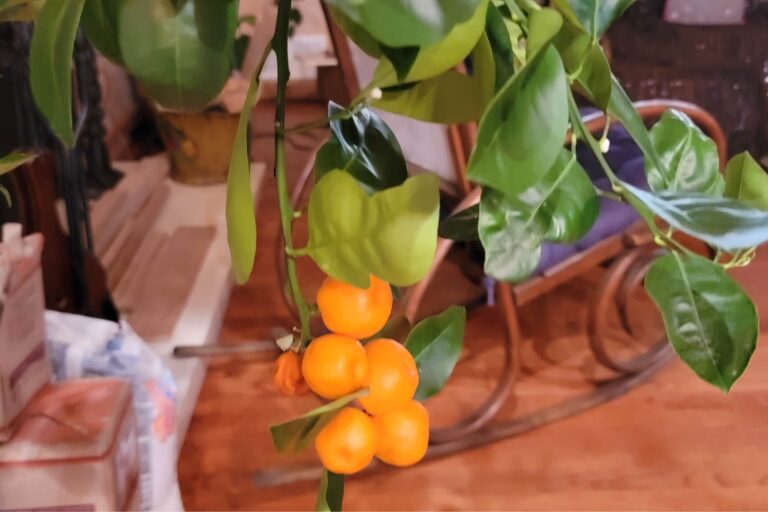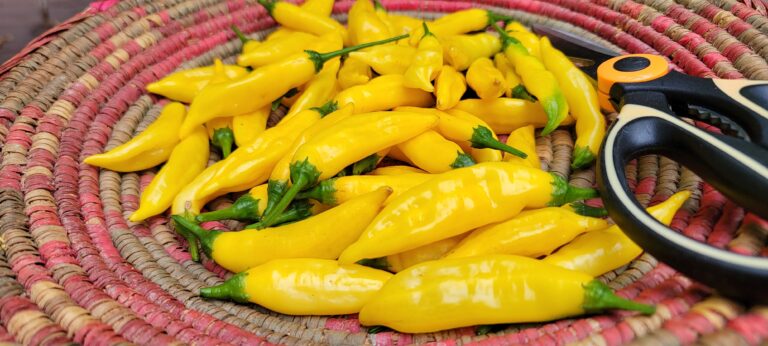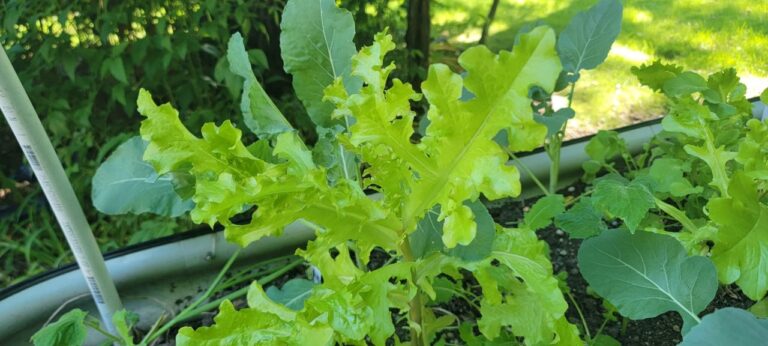Roses: 4 Unique Species from Nature
Introduction
Roses, members of the Rosa genus, are among the most popular flowering plants in the world, valued for their aesthetic appeal, cultural symbolism, and ecological value. Aside from their esthetic value, roses have complex botanical characteristics and represent an ancient lineage with a rich biodiversity. Rosa is a genus with over 150 known species and many of cultivated variations, ranging from compact ground covers to sprawling climbers, all of which are native to temperate parts of the Northern Hemisphere.
In my previous blog, we already learnt about rose, though in this blog, we will look at the scientific richness of wild rose species—also known as “species roses”—shedding light on their taxonomy, evolutionary history, unique traits, ecological roles, and prospects for conservation and breeding. I love to grow different flowers, which I used to share on my YouTube channel.
Taxonomy and Classification of Roses
Roses are part of the Rosaceae family, which also contains apples, strawberries, and cherries. Botanists divide Rosa species into four subgenera based on physical and genetic characteristics:
1. Hulthemia
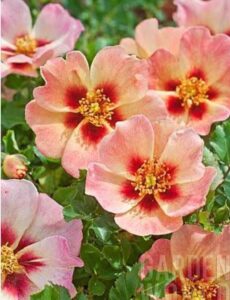
The smallest subgenus within the Rosa genus is represented by Rosa persica, a species known for its unique botanical features. This plant is characterized by its simple, uncomplicated leaves, which contribute to its overall delicate appearance. In addition to its foliage, Rosa persica is notable for its solitary flowers, which are distinguished by their striking blooms. A particularly defining trait of these flowers is the presence of a deep, dark basal blotch, which enhances their visual appeal and serves as a key identifying feature of this subgenus.
2. Hesperrhodos
This subgenus is notable for its unique species, Rosa minutifolia and Rosa stellata, both of which possess distinctly small leaves that enhance their delicate appearance. These plants typically have a shrubby growth habit, making them well-suited for a variety of garden settings. Their compact size allows them to thrive in smaller spaces while providing an attractive floral display. The tiny leaves also play an essential role in the plants’ overall adaptability to their environment. With these distinctive features, these species add a unique charm to any landscape.
3. Platyrhodon
This subgenus includes a single species known as Rosa roxburghii, which is native to East Asia. This unique rose is notable for its distinct bristly fruit, contributing to its rugged appearance. The plant features thorny stems and lush foliage, giving it a strong and resilient look. Rosa roxburghii thrives in various habitats, often found in mountainous regions and near forest edges, showcasing its ability to adapt to different environmental conditions. Its striking features and hardiness distinguish it from other species in the rose family.
4. Rosa
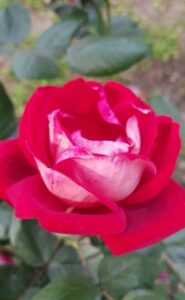
The largest and most diverse subgenus of roses encompasses known rose species. It is further divided into several distinct sections, each characterized by unique features and adaptations. Among these sections are Caninae, known for their dog roses; Cinnamomeae, which includes roses with cinnamon-like fragrances; and Pimpinellifoliae, recognized for their small, often spiny shrubs. This rich variety within the subgenus reflects the broad range of habitats and ecological niches occupied by these roses, contributing to their extensive genetic diversity and ornamental appeal.
Understanding plant classification is essential for horticulturists and breeders of wild species. This knowledge enables them to develop resilient cultivars with improved aroma and hardiness. By identifying specific traits, they can selectively cultivate plants that are suited to various conditions, resulting in varieties that thrive in different climates.
Species Diversity Across Continents
Species roses are found in Europe, Asia, North America, and areas of North Africa. Each location has species that are particularly suited to their surroundings, contributing to the genus’s broad ecological range.
European and Mediterranean Roses

In Europe, iconic species include Rosa canina (dog rose), Rosa gallica (French rose), and Rosa rubiginosa (sweet briar). Rosa canina is a tall, arching shrub that produces pale pink blooms and provides an important source of vitamin C through rose hips. Rosa gallica, previously native to southern Europe and western Asia, was one of the first cultivated roses and has long been prized for its vibrant color and medicinal properties.
Rosa rubiginosa, with its apple-scented foliage and pink solitary blooms, thrives in hedgerows and has become naturalized in many countries, including New Zealand and South America.
Asian Species and Their Legacy
Asia is the most species-rich continent for roses, with many basic species employed in current rose breeding. Rosa chinensis (Chinese rose) and Rosa gigantea are notable examples. Rosa chinensis, a native of China, blooms frequently throughout the growing season and introduced recurrent flowering into Western rose lines in the 18th century.
Rosa gigantea, one of the largest kinds, can grow up to 20 meters tall and has creamy-white flowers with a faint aroma. Other prominent Asian species include Rosa multiflora, which is prized for its clusters of little white flowers, and Rosa rugosa, which is known for its wrinkled leaves, salt tolerance, and insect resistance.
North American Wild Roses
North America is home to a variety of wild roses, including Rosa californica (California wild rose), Rosa woodsii, and Rosa setigera. These species have a variety of growth patterns, ranging from ground-hugging to robust climbers, and are essential to native pollinator communities.
Rosa setigera is noted for its huge clusters of fragrant blooms, for being one of North America’s few native climber plants. Rosa blanda, another important species, is particularly cold-tolerant, making it ideal for breeding in difficult environments.
Notable and Unique Species
Among the numerous species, a few stand out for their distinguishing characteristics:
- Rosa sericea –Originating from the majestic Himalayas, this unique plant species is remarkable for its distinct four-petal structure. It has adapted to thrive in high-altitude environments, showcasing its resilience in challenging conditions where few other plants can survive. This adaptation not only highlights its evolutionary significance but also its specialized role in the diverse ecosystem of the Himalayas.
- Rosa foetida – This particular species, renowned for its strikingly vibrant yellow blossoms, has played a significant role in the development of modern hybrids by contributing to the addition of the yellow pigment. However, this enhancement comes with a downside, as the species also tends to increase susceptibility to black spot disease, a common fungal infection that affects many plants. This dual impact illustrates the complex relationship between aesthetic qualities and plant health in hybridization efforts.
- Rosa omeiensis – This species thrives in high-altitude environments, where it exhibits a unique charm characterized by its meticulously shaped foliage. The leaves are artfully cut, giving them a distinctive appearance that enhances their ornamental value. Additionally, the plant features striking spiky stems that not only add to its visual appeal but also provide an intriguing texture, making it a noteworthy specimen in any botanical collection.
- Rosa moyesii – This plant is highly esteemed for its stunning, luxurious flowers, which boast a variety of colors and intricate petal structures that attract a multitude of pollinators. Additionally, it produces large, distinctive hips that are shaped like bottles, creating a striking visual appeal. These hips, often vibrant in color, contribute to the ornamental value of the plant, making it a favored choice in decorative fruit breeding. Its striking appearance not only enhances garden landscapes but also adds to its popularity among horticulturists and landscape designers alike.
Each of these species contributes to the genus’ richness and beauty, serving as a reminder of the evolutionary experimentation that has produced modern roses.
Morphological Features
The morphological diversity of species roses is astounding. Although most have five-petaled flowers, thorny stems, and complex leaves, they differ greatly in floral form, leaf structure, hip morphology, and growth behavior.
- Flowers: Species roses typically produce single flowers composed of five distinct petals, although variations can occasionally occur. These roses are known for their simplicity and elegance, often showcasing a more natural form compared to their hybrid counterparts. One of their most notable characteristics is their delightful fragrance, which tends to be more pronounced and appealing. This aromatic quality makes species roses particularly valued among gardeners and flower enthusiasts, as they can evoke a stronger connection to nature and the wild. Additionally, the blooms of rose species may come in various colors, enhancing their visual appeal in gardens and landscapes.
- Foliage: Leaf morphology among different species can exhibit a remarkable diversity. For instance, Rosa rugosa is known for its distinctly textured leaves, often characterized by their rough surface and pronounced venation, which add an interesting tactile quality to the plant. In contrast, Rosa minutifolia features much smaller and more delicate foliage, with leaves that are thin and finely structured, giving them an almost fragile appearance. This stark contrast in leaf characteristics not only enhances the aesthetic appeal of these species but also reflects their adaptations to different environmental conditions and ecological niches.
- Hips: Rose hips, the fleshy fruit of the rose plant, exhibit a remarkable diversity in their size, shape, and nutritional profile. For instance, the rose hips derived from Rosa canina, commonly known as the dog rose, are particularly notable for their high antioxidant content. These vibrant, red or orange fruits are often harvested for their rich flavor and potential health benefits. They are commonly used in a variety of culinary applications, such as herbal teas, where their tartness adds an enjoyable tang, and in jams and jellies, where their natural sweetness can be enhanced with sugar or other fruits. Additionally, rose hips are valued for their vitamin C content and other nutrients, making them a popular choice in natural remedies and health supplements.
- Growth Habits: Various species exhibit a remarkable range of growth forms, including erect shrubs, climbing varieties, and sprawling groundcovers. This adaptability enables them to thrive in diverse environmental conditions and fulfill multiple landscaping functions. For instance, erect shrubs can serve as effective privacy screens or decorative focal points, while climbing species can be used to cover trellises, walls, or fences, adding vertical interest to gardens. Groundcovers, on the other hand, are invaluable for suppressing weeds and preventing soil erosion on slopes or bare patches. Overall, their versatility positions these species as ideal choices for an array of landscaping applications, from creating robust hedgerows that define property boundaries to enhancing soil stability in areas prone to erosion
Ecological Significance
Species Roses are ecologically significant for a variety of reasons. Their flowers supply nectar and pollen for bees, butterflies, and beetles. Birds and mammals eat the hips, distributing seeds and promoting regeneration. Many rose species also host specialized insect groups, which promotes biodiversity.
Rose plants’ dense, thorny branches provide refuge and nesting locations for birds. Deep-rooted plants, such as Rosa rugosa, help to anchor soil in arid or erosion-prone locations. Wild roses’ fragrant blooms attract important pollinators while also deterring animals with their thorny defenses and, on occasion, pungent leaves.
Contributions to Modern Rose Breeding
Modern roses owe a lot of their genetic makeup to wild species. Species crosses have introduced traits like recurrent blooming, disease resistance, cold tolerance, and unique hues. For example:
- Repeat Blooming: Introduced from Rosa chinensis and Rosa moschata, it revolutionized rose gardening in Europe
- Fragrance and Petal Count: Rosa gallica, Rosa damascena, and Rosa centifolia all have an impact on the fragrance and petal count
- Hardiness: Rosa rugosa, Rosa blanda, and Rosa acicularis are resistant to freezing temperatures
- Disease Resistance: Wild species frequently have natural resistance to pests and infections, making them essential in sustainable gardening
Modern rose breeders are increasingly looking to species roses to restore genetic diversity and robustness to commercial lines.
Conservation of Wild Roses
With habitat loss, invasive species, and climate change affecting biodiversity, protecting wild rose species has become a top priority. Several species’ numbers are falling, particularly those with limited geographic ranges or specialized habitats.
Botanical gardens, seed banks, and field conservation programs are vital to conserving rose biodiversity. Organizations such as the International Union for Conservation of Nature (IUCN) have assessed the conservation status of several rose species, raising awareness and encouraging action. Furthermore, efforts are being made to protect native rose populations within their ecosystems to retain their coevolved interactions with local wildlife.
Conservation also includes protecting genetic features, which may be critical for future rose breeding. Drought tolerance, salinity resistance, and unique floral chemicals may be lurking in the genomes of lesser-known species, waiting to be discovered and used.
Cultural and Medicinal Value
Beyond gardens and genetics, species roses have long held cultural, gastronomic, and medicinal value. Roses were utilized in ceremonies, perfumes, and cures by ancient civilizations ranging from Greece and Rome to China and Persia.
Rosa damascena has been cultivated for generations and is still used to produce rose oil and rose water. Its petals contain essential oils with antimicrobial, anti-inflammatory, and mood-boosting qualities. Meanwhile, Rosa canina and Rosa rugosa hips are used as nutritional supplements high in vitamin C, flavonoids, and carotenoids.
Rose petals were used in traditional medicine to cure a variety of ailments, including stomach difficulties and skin irritations. Modern studies on rose polyphenols’ antioxidant and anti-inflammatory effects validate these ancient usages.
Integrating Species Roses into Gardens
Rose species are becoming increasingly popular among gardeners who appreciate sustainability, biodiversity, and a naturalistic appearance. Unlike some hybrid roses, which require extensive care, many wild types are disease-resistant, tolerant of poor soils, and beneficial to pollinators.
They blend well with native vegetation, hedgerows, and informal environments. Their seasonal interest—from spring blossoms to autumn hips—increases biodiversity all year. Rosa glauca, for example, gives visual interest and wildlife value while requiring little maintenance.
Furthermore, many species require less trimming and fertilizing, which is consistent with organic and regenerative gardening practices. Gardeners seeking to assist native pollinators and birds frequently discover that species roses provide an ideal balance of aesthetics and ecological.
Conclusion
Rose species create a fascinating world of variety, function, and beauty. For millennia, wild roses have shaped ecosystems and cultures across Europe’s windswept hills, Asia’s thick forests, and North America’s vast prairies. Their genetic gifts support the beauty of cultivated roses, while their ecological roles help pollinators and wildlife.
As our awareness of floral diversity grows, species roses serve as living reminders of nature’s inventiveness and persistence. Whether appreciated in nature, conserved in collections, or grown in gardens, these roses continue to excite scientists, gardeners, and dreamers alike.

